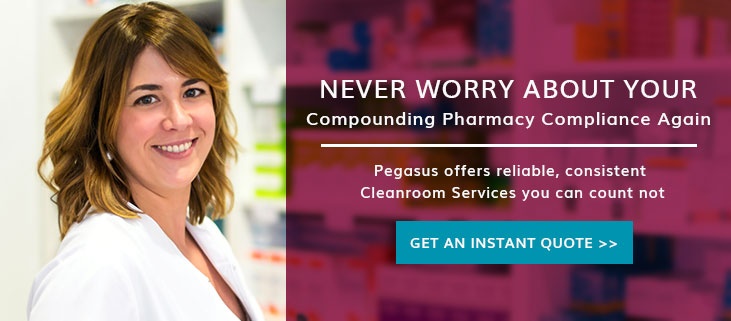Compounding pharmacies are pharmacies that make prescriptions for patients with specific needs that commercial drugs can’t meet. It’s important to properly maintain compounding pharmacies so those patients can receive the medications they need without issue. But maintaining these important pharmacies is complex. There are several levels of regulations that must be complied with, and simply wiping down the pharmaceutical equipment every now and then won’t cut it.
Why Sterility Matters in Compounding Pharmacies
Ultimately, the purpose of all pharmaceutical regulations is to protect both the patients and the pharmacies. Without proper checks and balances in place, compounding pharmacies could produce medications that are not the correct strength or are contaminated. Depending on the severity of these issues, patients face serious risks, including death, while pharmacies face fines or even being shut down due to lack of safety.
How to Keep Pharmaceutical Cleanrooms Clean

Compounding pharmacies are regulated by state boards for adherence to state regulations, the Food and Drug Administration (FDA) for drug integrity, and the Drug Enforcement Administration (DEA) for controlled substance handling. Additionally, the United States Pharmacopeia (USP) regulates the sterility of compounding pharmacies under USP 797, which helps reduce the risks of contamination, infection, and incorrect dosing. That’s a lot of regulations to keep track of.
Based on all the above information, the four critical components required to keep a compounding pharmacy contaminant-free are:
- Follow pharmaceutical regulations for your respective state.
- Follow FDA regulations for human drug compounding.
- Follow DEA regulations for how pharmacies should handle controlled substances.
- Follow USP 797 regulations for sterile pharmaceutical compounding preparations.
But how do you go about complying with all those regulations exactly?
Compounding pharmacies produce medications in cleanrooms, or controlled environments, which require specific cleaning techniques that differ from standard janitorial duties. When it comes to keeping a compounding pharmacy contaminant free and in compliance with USP 797, the number one tactic any pharmacy should use is proper cleanroom cleaning technique.
Proper compounding pharmacy cleanroom cleaning technique includes things like restricting those who enter from bringing personal items into the cleanroom, requiring approved cleanroom garments to be worn inside the cleanroom, prohibiting smoking or eating inside the cleanroom, prohibiting cosmetics inside the cleanroom, restricting the use of paper and pens to only those approved for cleanroom use, requiring slow and controlled movements in the cleanroom, and prohibiting anyone with any illnesses from entering the cleanroom.
Next Steps

Compounding pharmacies provide necessary services with high risks. It’s critical that they are maintained and regulated to the highest degree to ensure those who consume the drugs they produce do not experience adverse effects, protecting the pharmacy’s ability to keep its doors open and continue to help patients in need of unique treatments. The regulations that must be complied with are, however, vast and complex.
If you’re in charge of maintaining a compounding pharmacy and are feeling lost in a sea of red tape, don’t worry. You don’t have to be an expert on the FDA, DEA, USP, and state regulations for compounding pharmacies, nor do you have to be an expert on controlled environments and Cleanroom Cleaning. There are companies out there that can provide that expertise for you, like Pegasus. We specialize in cleaning these types of specialized areas to keep our clients in compliance with all required regulations. Don’t try to do it all alone. Get your instant quote for our compounding pharmacy cleaning services today.







